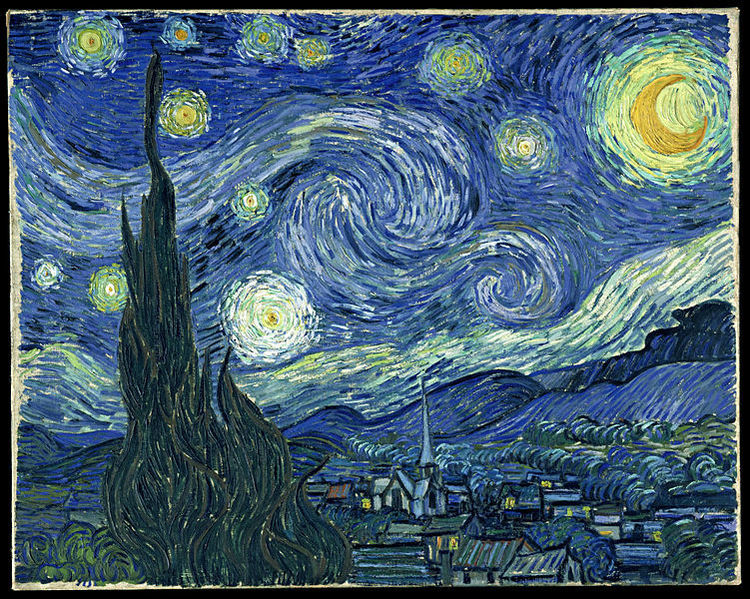Modern art is not any form of contemporary art and should not be confused. The term “Modern art” refers to the late 19th and early to mid-20th-century artworks, portraiture, and everything that lies in between.
It was that time in art history when artists focused on reimagining, reinventing, reinterpreting, and rejecting the orthodox and traditional values of proceeding styles. The different art movements with which artists changed the landscape of art culture and liberated their thoughts freely, using art as their medium.
Art movements were just one way to make it happen. Not one, but many art movements around the globe were making this change possible. Learn about art movements in the segment below and see how modern art expanded in its organic form.
Major Art Movements and Artists
The art movement starts with light and airy Impressionism and ends with what you popularly call abstract expressionism. This journey of modernism gives every artist the freedom to be vocal on matters that are otherwise left unspoken.
Beginning with the first art movement that ignited the flame of a change was Impressionism. Claude Monet was the prime catalyst who challenged the rigid rules and realistic depictions of the old-school academic painting style. In 1872, Monet’s magical brushstrokes innovatively introduced the color palette to paint the all-time beauty, Impression Sunrise.
After Monet, influential French painters like Pierre Auguste Renoir and Edgar Degas joined the movement and continued to paint their hearts out with Impressionism. After Impressionism was the era known as Post Impressionism, it was inspired by the artistic freedom of Impressionism. It saw the emergence of new artists like Vincent Van Gogh, Henri Toulouse Lautrec, etc.
It was a colorful movement soaring heights in the 1890s and depicted exciting emotions and a sound choice in perspective for subject interpretation over realistic presentation. The dominance of Starry nights by Van Gogh is a classic epitome of post-impressionist art.
The Starry Night – Vincent van Gogh
Fauvism and Cubism
Soon after the post Impressionism period, Fauvism art movement deepened its roots and prospered to a great extent at the beginning of the 20th century. Henri Matisse was the pioneer of Fauvism who continuously kept the liveliness of vibrant colors to capture landscapes and still, life’s in his portraiture.
The critical characteristic of paintings from Fauvism was the instilling sense of expressive emotions in their artworks. Painters adapted crude and blatant brushstrokes mixed with vivid colors coming out of their tubes to appall the audience. The techniques were basic yet beautiful in their sense.
Following Cubism was the art movement that the modernist era cherished the most, Cubism. Only one man made it such a huge success and left a hallmark of its legacy forever, the one and only Pablo Picasso. Along with Picasso, George Braque was also an eminent leader of the movement that developed the reign of Cubism.
The focal point of Cubism sticks to the conventions of the past to start a new vein. It also focuses on the flat dimensions of the canvas. It was achieved through various conflicting vantage pinks to bring to everyday canvas objects such as pitchers, bottles, musical instruments, and human figures. Picasso’s love for monochrome also emphasizes scale to consider the inherent structure of their works.
Futurism and Vorticism
Futurism was the most controversial art movement of the modern art movement. It was an art movement inspired by the relationship between man and machines. It was innovative and featured the speed at which man evolved in due course of time. It nearly discarded the artistic culture and traditional forms of the past.
Filippo Marinetti, in 1909 manifested the term Futurism and did it influence not only artists but also sculptors, architects, writers, and painters. The paintings of this period were mainly about automobiles, trains, dancers, large crowds, and intersecting patterns of Cubism and Fauvism with a blend.
On the other hand, Vorticism was an English art movement similar to Futurism. It also centralized the ideas of man, machines, speed, and the progressive motion of automobiles replacing the generic living style of humans until the 20th century. Futurism comes from countries like France and Italy, whereas Vorticism marks Russia and London as its channelizing supreme centers.
Futurists and Vorticists were proud of being independent to express their mechanism likeness. Their paintings were glimpses of shipyards sites and active factories that worked twenty-four seven to change the world’s dilemma by introducing technology into man’s life.
Suprematism
It was the first movement to adapt geometrical abstraction in artworks completely. Kazimir Malevich was the founder of this movement who, along with his other contemporaries, authored the Suprematist manifesto.
This art movement subdued the spiritual and mystic undertones of colors combined with abstraction. Malevich stated that the “supremacy of pure feeling or perception in the pictorial arts” was the central goal that he wished to connect with other ardent artists and the general audience.
As he progressed in his art movement, he included:
- More neutral colors.
- Shapes from triangles to squares.
- The primary abstract art is essential to deliver the best of Suprematism.
He epitomizes the “white on white” paintings as a significant share of his movement. In such paintings, the outlines of the objects were faintly visible in his paintings.
The Bottom Line
The different art periods and famous art movements brought a significant change in the world. These art movements contributed to changing the mindset and how people used to look at things. The above art movement lists the different art periods and how art evolution was observed globally.



















